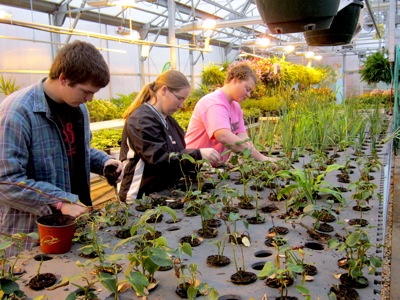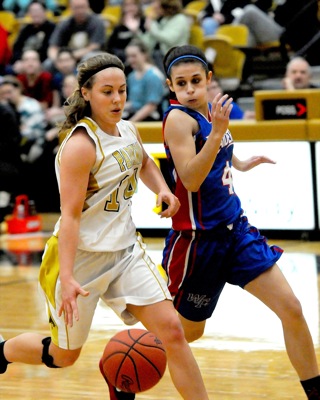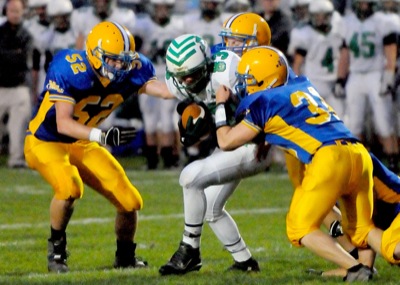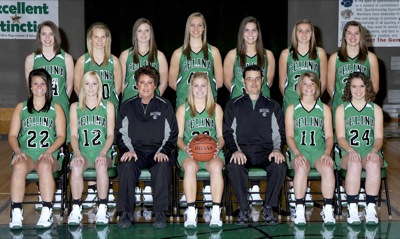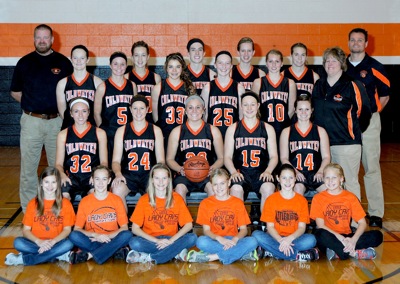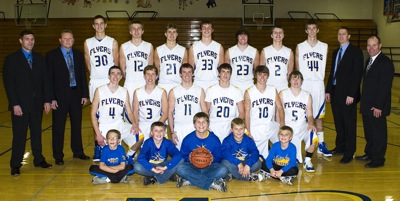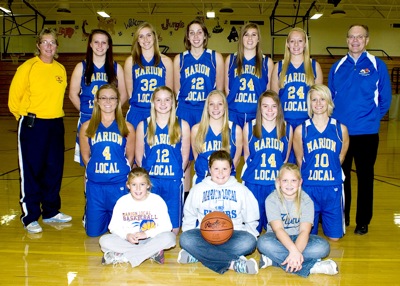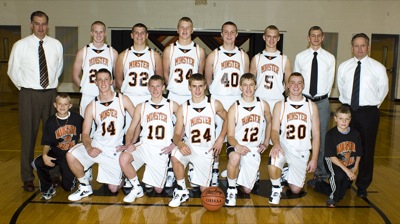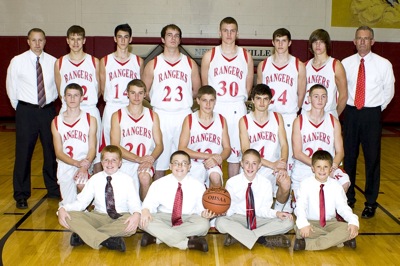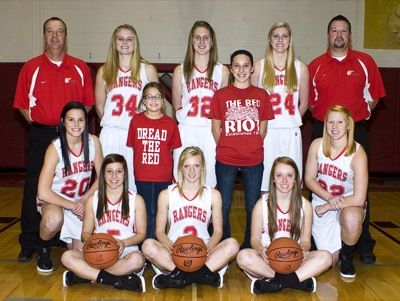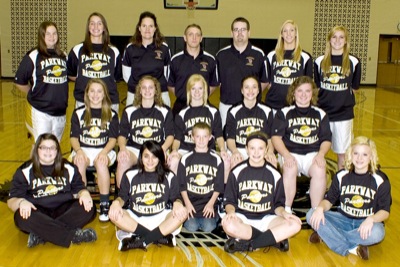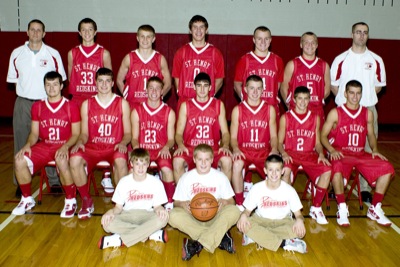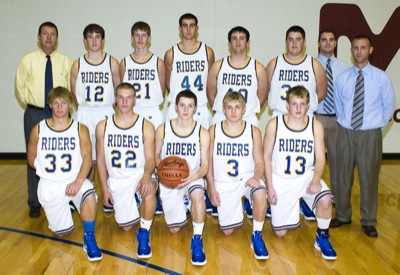Wednesday, November 30th, 2011
Volunteers turn trash into treasure for homeless
St. Nicholas Church
By Margie Wuebker
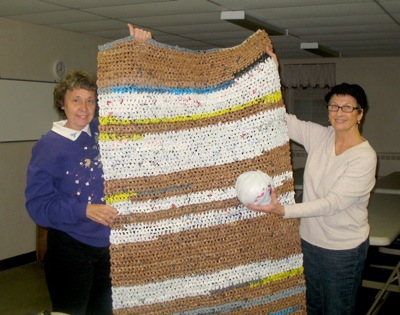
Photo by Margie Wuebker/The Daily Standard
Volunteers Betty Pothast of Versailles, left, and Joni Schmidt of Osgood, display one of the completed 6-foot mats bound for a homeless shelter in Dayton and a ball of plarn - one of five to six needed to complete a mat.
OSGOOD - Finding a way to provide warmth and comfort for the homeless is in the bag, according to volunteers at St. Nicholas Catholic Church.
They turn plastic shopping bags - the kind that come from supermarkets, department stores and a host of other retail outlets - into sleeping mats for St. Vincent de Paul Gateway Shelter in Dayton.
Joni Schmidt and Donna Grieshop first heard about the philanthropic project from church members in neighboring Versailles.
"I nearly laughed when I first heard about the project," Schmidt said. "And the more I thought about it, the more intriguing the idea became. After all, most of us have a seemingly endless supply of plastic bags."
The women first attended a work session in Versailles and discovered the process was not as difficult as they imagined. After receiving permission to use the St. Nicholas basement for the project, they issued a plea for bags because it takes 500 to 700 bags to make one 3-by-6-foot mat.
"People really stepped up," Schmidt said. "I went to the church vestibule every day and found the garbage cans placed there overflowing with bags. Even the CCD kids brought bags from home."
Eighteen women showed up for the first work session earlier this month, while Tuesday night's work session had slim attendance due to the first snowstorm of the year. A number of volunteers also work from home.
Schmidt and fellow worker Betty Pothast demonstrated the process needed to turn grocery bags into plastic yarn or "plarn." The bags are flattened and cut into 3-inch-wide strips before looping and knotting the strips to form a large ball for crocheters.
Schmidt pointed out it is easy to pick out quilters in the group. They come with rotary cutters and measuring gauges; the non-quilters rely on scissors and rulers. Thicker toothpicks come in handy to pick apart misplaced knots.
"This is something that you can do at home in front of the television," Grieshop said. "Sometimes my husband (Jerry) gets involved, and he's better at looping than I am."
It takes an hour or more to create a ball slightly smaller than a volleyball with five to six balls needed per mat.
Marianne Brunswick reached for a fat, P-size crochet needle and began turning the "plarn" into a long chain.
"I am used to crocheting, but this took some getting used to," she said. "First, the needle is bigger and second, plarn is different from regular yarn."
Brunswick prefers to use plastic of the same weight and density and variegated colors to make an attractive mat.
The finished mats are lightweight and heavy duty, lasting longer than cloth blankets, and repel water and insects, according to a shelter volunteer. The mats also are made with an accompanying cord so they can be rolled up and secured.
The first 10 mats from the St. Nicholas group are to be delivered Dec. 14.
"I tried one of the mats myself," Schmidt said. "It adds some softness, and it certainly beats sleeping on the bare floor."
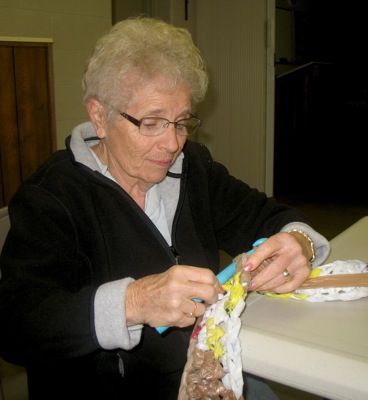
Photo by Margie Wuebker/The Daily Standard
Osgood resident Marianne Brunswick, above, wields a large crochet hook creating stitches from plarn - a material fashioned from plastic shopping bags.


